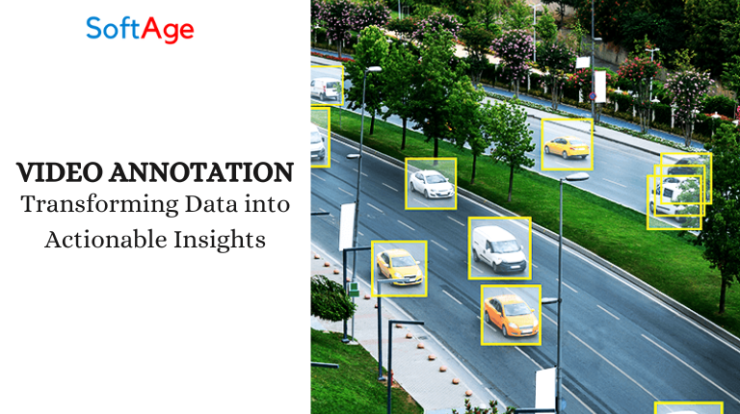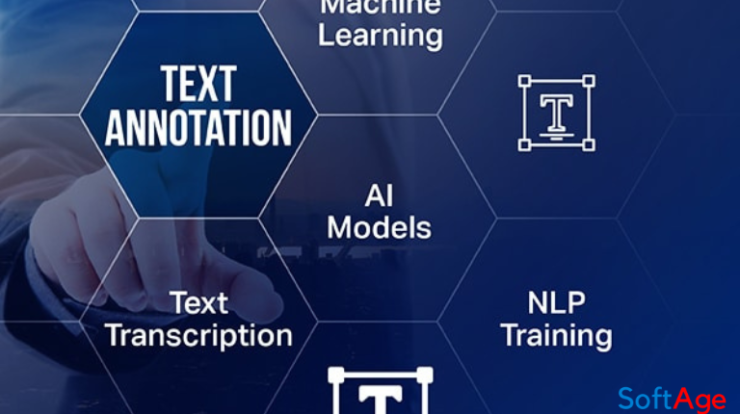
In today’s digital age, videos have become an integral part of our daily lives. Whether it’s for entertainment, education, or communication, videos have the power to convey complex information in an engaging and accessible way. With the rise of artificial intelligence (AI) and machine learning, the demand for video annotation has surged, opening up new possibilities across various industries.
What is Video Annotation?
Video annotation is the process of adding metadata or labels to different elements within a video, making it more accessible and informative to both humans and ma chines. This metadata can include information about objects, actions, events, and timestamps, among others. Video annotation transforms a raw video file into a structured dataset, facilitating various applications, particularly in the fields of computer vision and machine learning.
Significance of Video Annotation
The significance of video annotation in today’s data-driven world cannot be overstated. Video annotation plays a pivotal role in various domains and industries, making it a valuable tool for both human understanding and machine learning applications. Here are some of the key aspects that highlight the significance of video annotation:
Advancing AI and Machine Learning: Video annotation plays a pivotal role in the development and training of AI models, particularly in computer vision and natural language processing. The annotated data serves as the ground truth, allowing models to learn from labeled examples. This is evident in applications like object detection, facial recognition, and sentiment analysis, where video annotation is indispensable for model training.
Enhancing User Experiences: In the realm of entertainment, video annotation enhances user experiences by powering recommendation systems. Platforms like Netflix, YouTube, and TikTok rely heavily on video annotation to recommend personalized content to users, increasing engagement and retention.
Medical Diagnosis and Research: In the field of healthcare, video annotation aids in medical imaging analysis, remote patient monitoring, and surgical training. Annotated medical videos help clinicians and researchers identify abnormalities, track disease progression, and develop treatment strategies.
Education and Training: Video annotation is a valuable tool for e-learning platforms. It allows educators to create interactive and engaging content by adding annotations that explain complex concepts, providing visual aids, and enabling learners to grasp information more effectively.
Public Safety and Security: Surveillance and security applications benefit significantly from video annotation. Annotated videos assist in monitoring public spaces, identifying suspicious activities, and automating threat detection, contributing to enhanced public safety.
Autonomous Vehicles: The development of autonomous vehicles heavily relies on video annotation. Annotated video data is used to train AI systems to recognize and respond to objects, road signs, pedestrians, and other vehicles, ensuring safe and reliable navigation.
Retail and E-commerce: In the retail industry, video annotation supports customer behavior analysis, inventory management, and checkout automation. Annotated video data can track customer movements, assess shelf stocking, and enable cashier-less checkout experiences, as exemplified by Amazon Go stores.
Sports Analysis: Sports teams and analysts employ video annotation to study player performance and tactics. Annotated game footage helps coaches gain insights into player movements, strategies, and areas for improvement, ultimately enhancing team performance.
Content Moderation: Social media platforms employ video annotation to enforce content guidelines and policies. Annotated videos are used to identify and filter out inappropriate or harmful content, maintaining a safe and respectful online environment.
Methodologies and Techniques in Video Annotation
Video annotation involves several methodologies and techniques, each tailored to specific tasks and objectives. These methodologies play a crucial role in labeling and enriching video data with metadata to make it understandable and useful for various applications. Here are some of the common methodologies in video annotation:
Object Detection and Tracking: This involves annotating objects within a video and tracking their movements throughout the video’s duration. Object detection and tracking are essential for applications like surveillance, autonomous vehicles, and sports analysis.
Action Recognition: Action recognition annotation focuses on labeling and categorizing different actions or activities within a video. This is critical for understanding human behaviors in various contexts, such as in healthcare, sports, and security.
Speech and Audio Annotation: In addition to visual content, video annotation can also encompass audio elements. This includes transcribing spoken words, identifying background sounds, and annotating audio events in videos.
Temporal Annotation: Temporal annotation involves marking specific timestamps or time intervals within a video. This is useful for annotating events that occur over time, such as disease progression in medical videos or player interactions in sports footage.
Emotion and Sentiment Analysis: In videos involving human subjects, annotators can label facial expressions and emotional cues. This is crucial for applications like sentiment analysis in market research or user experience testing.
Challenges in Video Annotation
Video annotation is a valuable process for extracting meaningful information from video data, but it comes with its own set of challenges and complexities. These challenges can vary depending on the type of annotation task and the nature of the video content. Here are some common challenges in video annotation:
Scalability: Annotating videos can be a time-consuming and labor-intensive task, especially when dealing with large datasets. Scaling annotation efforts can be a logistical challenge.
Consistency: Maintaining consistency in annotations across different annotators can be difficult, leading to potential errors and inconsistencies in the dataset.
Subjectivity: Interpreting video content and annotating it can be subjective. Annotators may have different interpretations of the same visual data, affecting the accuracy of AI models.
Privacy Concerns: Annotating videos that contain sensitive or private information requires careful handling to protect individuals’ privacy.
Resource Intensity: The hardware and software infrastructure required for video annotation can be costly, making it a barrier for smaller organizations and startups.
The Transformative Impact
Improved Decision-Making: Video annotation enables AI models to make more informed decisions in real-time. This is especially valuable in industries like healthcare, finance, and autonomous transportation, where precision and speed are critical.
Cost Savings: In industries like manufacturing and agriculture, video annotation can optimize processes, reduce waste, and lower operational costs. For example, annotating video data from drones can help farmers identify crop health issues early, leading to higher yields.
Enhanced User Engagement: In the world of online content, video annotation helps platforms like TikTok and Instagram curate content that keeps users engaged and coming back for more.
Personalized Services: Video annotation enables businesses to offer highly personalized services, such as targeted advertising, product recommendations, and customized user experiences.
Key takeaways
SoftAge plays a pivotal role in advancing AI-driven innovations through video annotation. This often overlooked process is the driving force behind a wide array of industries. Its remarkable ability to convert raw video data into valuable insights is essential, leading to transformative changes in various sectors and reimagining the trajectory of AI. Whether it’s enhancing autonomous vehicles, improving medical diagnostics, or revolutionizing online content, SoftAge’s video annotation services unleash the limitless potential of visual data in our digital age.

